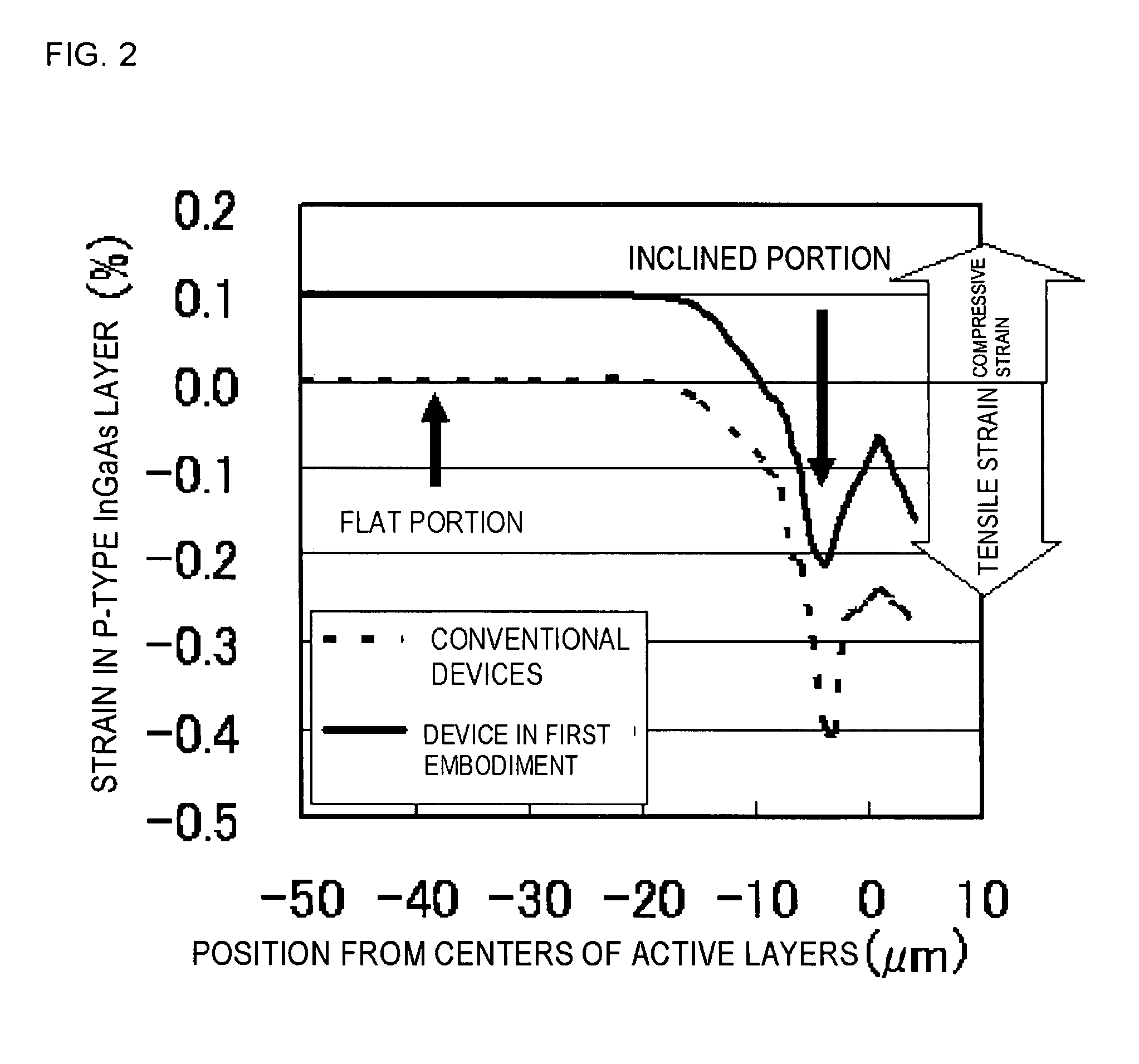Buried semiconductor laser and method for manufacturing the same
a semiconductor laser and buried technology, applied in semiconductor lasers, laser details, electrical devices, etc., can solve the problems of deteriorating laser characteristics, adversely affecting the reliability of the semiconductor device, and devices that are structurally vulnerable, so as to reduce the dislocation of the contact layer
- Summary
- Abstract
- Description
- Claims
- Application Information
AI Technical Summary
Benefits of technology
Problems solved by technology
Method used
Image
Examples
first embodiment
[0033]FIG. 1A illustrates a structure of a buried semiconductor laser according to the first embodiment of the present invention. The semiconductor device of the present embodiment includes an n-type InP substrate 11, an active layer 17 as a light emitting region, a p-type current block layer 18, an n-type current block layer 19, a p-type clad layer 20, and a p-type InGaAs contact layer 21.
[0034]The block layers 18 and 19 are provided on both sides of the active layer 17. In other words, the active layer 17 is disposed between a pair of the block layers 18 and 19. The p-type clad layer 20 is disposed so as to cover the active layer 17 and the block layers 18 and 19.
[0035]FIG. 1B illustrates an enlarged view of a structure around the active layer 17 showed in FIG. 1A. A mesa structure including an n-type InP clad layer 12, n-side InGaAsP guide layer 13, the active layer 17, a p-side InGaAsP guide layer 15, and a p-type InP clad layer 16 is provided on the n-type InP substrate 11. The...
second embodiment
[0046]In reference to FIG. 3, another embodiment of a buried semiconductor laser, in which the p-type InGaAs contact layer 21 in FIG. 1 is replaced with a superlattice structure of a p-type InAs layer and a p-type GaAs layer will be described. In FIG. 3, the p-type InGaAs contact layer 31 is composed of a superlattice structure of a p-type InAs layer 32 and a p-type GaAs layer 33. In the present embodiment, similarly as in first embodiment, a growth is conducted to reach the p-type InP clad layer 20, and then an InAs / GaAs superlattice structure 31 composed of the p-type InAs layer 32 and the p-type GaAs layer 33 is grown. In such case, it is confirmed that the p-type InAs / GaAs superlattice structure 31 is grown to have an average compressive strain within a range of from 0.1% to 0.2% in the flat portion thereof that is sufficiently remote by 50 μm or further from the portion thereof immediately above the active layers, so that the flat portion and the inclined portion immediately ab...
PUM
 Login to View More
Login to View More Abstract
Description
Claims
Application Information
 Login to View More
Login to View More - R&D
- Intellectual Property
- Life Sciences
- Materials
- Tech Scout
- Unparalleled Data Quality
- Higher Quality Content
- 60% Fewer Hallucinations
Browse by: Latest US Patents, China's latest patents, Technical Efficacy Thesaurus, Application Domain, Technology Topic, Popular Technical Reports.
© 2025 PatSnap. All rights reserved.Legal|Privacy policy|Modern Slavery Act Transparency Statement|Sitemap|About US| Contact US: help@patsnap.com



